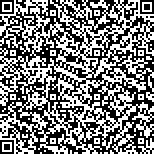下载中心
优秀审稿专家
优秀论文
相关链接
首页 > , Vol. , Issue () : -
摘要

风云四号A星(FY-4A)先进的静止轨道辐射成像仪(AGRI)已进入设计寿命末期阶段,部分太阳反射通道的辐射性能出现明显退化,影响了定量遥感产品应用精度。本研究采用基于深对流云(DCC)的定标跟踪方法对AGRI反射波段辐射响应变化进行定量评估。为提高评估的精度和稳定性,研究了DCC方法对红外亮温阈值、像元邻域空间均一性条件和DCC角度分布模型(ADM)的敏感性。结果表明:对于红外亮温阈值,可见光通道DCC反射率均值的敏感性低于概率密度函数(PDF)峰值反射率;而在短波红外通道,DCC PDF峰值反射率的敏感性略低于反射率均值。在可见光-近红外波段采用CERES ADM模型能较好地校正DCC反射率各向异性的影响,且明显优于Hu模型,但两种ADM模型在短波红外波段均无明显校正效果。基于上述敏感性研究优化了DCC方法中的阈值选择和ADM策略,对2017年3月至2023年4月FY-4A/AGRI反射波段的辐射响应进行跟踪评估。结果发现:0.47μm、0.65μm和2.25μm通道出现显著退化,总衰减率分别为45.55%、26.22%和6.362%,该结果为AGRI反射波段定标系数更新提供了参考依据。
Objective The advanced geostationary orbit radiometer (AGRI) of FY-4A satellite has been on orbit for 6 years, and the radiation performance of some reflective channels have significantly degraded, affecting the accuracy of quantitative remote sensing product applications. On-orbit vicarious calibration methods based on deep convective cloud (DCC) targets can track and correct the radiometric response of spaceborne optical sensors for attenuation. This method relies on large-sample statistical analysis, and it is significantly to conduct sensitivity studies on factors influencing the calibration accuracy and stability in this method and establish optimal solutions. Method The procedural of the fundamental DCC calibration and tracking method are as follows: initially, extract DCC target pixels from FY-4A/AGRI L1 level data, calculate the reflectance of the target pixels, and apply anisotropic correction using the DCC Angle Distribution Model (ADM). Subsequently, construct daily or monthly Probability Density Functions (PDF) of DCC reflectance and track the trend in peak reflectance (also known as mode) or reflectance mean to monitor and evaluate the radiometric performance of the FY-4A/AGRI instrument. In order to improve the calibration accuracy and stability, the sensitivity research scheme for infrared brightness temperature threshold, pixel uniformity conditions and DCC angle distribution model (ADM) was proposed. Lastly, correct the DCC model and establish an optimal solution according to the results of the sensitivity analysis. Result The results indicate that for the infrared brightness temperature threshold, the sensitivity of DCC mean reflectance is lower than that of probability density function (PDF) peak reflectance in the visible light channel, and in the short-wave infrared channel, the sensitivity of DCC PDF peak reflectance is slightly lower than that of reflectance mean. In the visible-near-infrared band, the CERES ADM model can better correct the effect of DCC reflectance anisotropy, and is significantly better than the Hu model. However, neither of the two ADM models has obvious correction effect in the short-wave infrared band. Based on the above sensitivity studies, the threshold selection and ADM correction strategy in the DCC method are determined. The radiation response of FY-4A/AGRI reflected bands from March 2017 to April 2023 is tracked and evaluated. The results show that the radiation response of 0.47μm, 0.65μm and 2.25μm channels degrades significantly, with the total attenuation rates of 45.55%, 26.22% and 6.362%, respectively. This result provides a reference for updating the AGRI operation calibration coefficient. Conclusion The paper conducted a sensitivity analysis on the key factors in the radiometric calibration tracking method based on Deep Convective Clouds (DCC) for satellite optical sensors, enhancing calibration accuracy and stability through the establishment of an optimal solution. By utilizing optimization methods, it quantitatively evaluated the variations in radiometric response performance in the reflectance band of FY-4A/AGRI, providing valuable reference for updating the operational calibration coefficients of this instrument.

